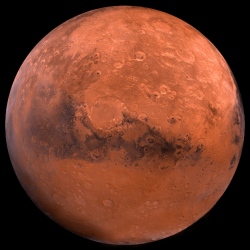
They are all ancient terrains where satellite evidence has suggested water was present for prolonged periods. Esa’s ExoMars vehicle will be the first surface rover sent specifically to search for signs of past or present life on the Red Planet. Previous such robots have concentrated on determining merely whether the world would have been habitable.
ExoMars will have a drill to pull up samples from 2m below ground. The hope is that its sophisticated lab equipment will be able to detect signatures either of microbial activity today or that took place billions of years ago. The potential landing sites are named Mawrth Vallis, Oxia Planum, Hypanis Vallis and Aram Dorsum.
They have been chosen because of their high scientific interest, but also because they meet strict engineering constraints. For example, all these sites are near the equator. This will give the rover, which will have solar panels, optimal lighting conditions. The sites are also very low – about 2km or more below datum (the equivalent of sea level on Earth). This will give the parachute system that puts ExoMars on the surface the maximum amount of atmosphere in which to slow the fast-descending probe.
